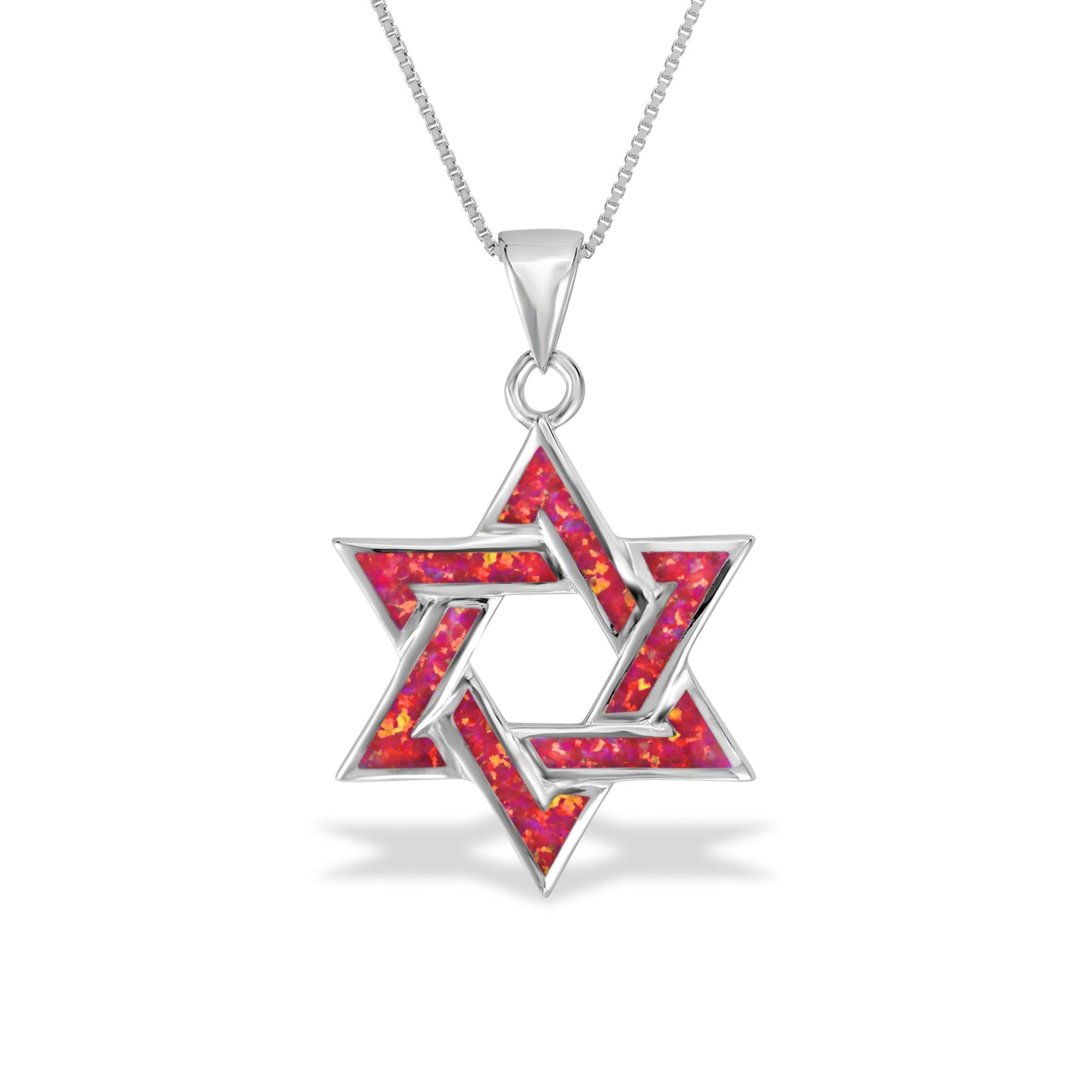Key Takeaways
- The Star of David, also known as the Magen David or Shield of David, is one of the most widely recognized Jewish symbols.
- Historically, it served different purposes before becoming a mainstream emblem of Judaism in the 19th century.
- The symbolism of the Star of David embodies spiritual themes such as divine protection, the connection between the human and the divine, and unity within duality.

What is the Star of David?
The Star of David, known in Hebrew as the Magen David ("Shield of David"), is a hexagram formed by two interlocking triangles. This six-pointed star is often displayed on synagogues, Jewish tombstones, and the Israeli flag, representing both religious and cultural identity.
Historical Context
The history of the Star of David is less clear-cut than other symbols of Judaism. Unlike the menorah or the shofar, which have biblical references, the Magen David does not appear in early Jewish texts. Scholars suggest that the six-pointed star was used as a decorative motif in various ancient cultures, including those of India and the Middle East.
- Medieval Period: By the medieval era, the hexagram began appearing in Jewish contexts, primarily in mystical Kabbalistic texts. It was often associated with divine protection and appeared on amulets or ceremonial items.
- 17th Century: In Prague, the Jewish community adopted the Star of David as an official symbol, placing it on synagogues and communal flags. It gradually became recognized as a mark of Jewish identity.
- 19th Century to Modern Times: The Magen David became widely embraced as a universal symbol of Judaism during the 19th century when Jewish communities in Europe and beyond sought unity and a distinct visual representation. The establishment of the State of Israel in 1948 solidified its role as a national emblem.

Symbolic Interpretations
The Star of David is rich with symbolic meanings that resonate within Jewish spirituality and culture.
Unity and Balance
The two overlapping triangles represent the connection between God and humanity: the upward triangle symbolizes the striving for God, while the downward triangle suggests divine interaction descending to humankind. Together, these triangles illustrate the harmonious balance between the physical and spiritual worlds.
Divine Protection
The term Magen David itself refers to a "shield", implying that the symbol serves as a form of spiritual protection. This interpretation links back to King David, the storied biblical monarch and warrior, whose legacy carries themes of strength and safeguarding the Jewish people.
Kabbalistic and Mystical Meanings
Within Kabbalah, a mystical branch of Judaism, the Star of David represents profound spiritual concepts. The six points of the star correspond to the six directions in space (north, south, east, west, up, and down), while the center represents the divine essence or the seventh element—the spiritual center that binds them together. This alludes to God’s omnipresence and the encompassing nature of divine protection.
Human Experience and Duality
The interlaced triangles signify dualities in human experience: male and female, fire and water, justice and mercy. The blending of these opposites underscores the importance of balance in Jewish thought.
Cultural Significance and Modern Use
The Star of David holds immense cultural significance within Jewish communities worldwide. Its inclusion on the flag of Israel symbolizes unity, resilience, and continuity of the Jewish people. The blue and white design of the flag, inspired by the traditional tallit (prayer shawl), amplifies its connection to Jewish religious practices.
During the Holocaust, the Nazis forced Jews to wear a yellow Star of David badge, turning a sacred symbol into a mark of persecution. Despite this dark chapter, the star emerged post-World War II as a symbol of hope, defiance, and Jewish identity.
Today, the Star of David appears in religious and national contexts, as well as in jewelry, art, and educational resources. It continues to serve as an emblem of faith, communal solidarity, and Jewish pride.
Mystical and Spiritual Insights
For those who study the mystical aspects of Judaism, the Star of David’s geometric structure holds deeper layers of meaning. The interwoven triangles reflect themes found in the Sephirot of the Kabbalistic Tree of Life, emphasizing the interconnectedness of all creation and the permeation of divine wisdom throughout existence.
In Hasidic and mystical traditions, the Magen David symbolizes the merging of the physical and metaphysical—our earthly actions impacting higher spiritual realms and vice versa. This underscores a core Jewish belief that humanity plays a role in the divine plan.
Modern Global Use
While most often linked to Jewish life and heritage, the Star of David occasionally appears in broader contexts. It is recognized internationally as a symbol of Judaism and often used in interfaith dialogue as a representation of Jewish participants. Some non-Jewish organizations and individuals also adopt the symbol to show solidarity with Jewish causes, especially in times of adversity.
Conclusion
The Star of David, with its layered history and rich symbolism, serves as a reminder of the profound connection between the Jewish people, their faith, and their resilience. It has evolved from a relatively obscure decorative element to a central emblem representing Jewish identity, spirituality, and continuity. Whether seen on the Israeli flag, synagogues, or jewelry, the Magen David remains a powerful testament to unity, protection, and the enduring spirit of Judaism.
Frequently Asked Questions (FAQ)
1. What is the Star of David?
The Star of David is a six-pointed hexagram made of two overlapping triangles, recognized as a symbol of Judaism and Jewish identity.
2. What does the Star of David mean?
The Star of David symbolizes divine protection, balance, unity between God and humanity, and Jewish heritage.
3. What does the Star of David represent?
It represents Jewish faith, protection, connection to God, and the history of the Jewish people.
4. What does the Star of David symbolize?
It symbolizes divine intervention, balance, and the relationship between physical and spiritual realms.
5. What does the Star of David mean spiritually?
Spiritually, it signifies divine unity, omnipresence, and the six directions of space with God at the center.
6. Why is the Star of David important?
The Star of David is a central symbol in Judaism, representing faith, identity, and protection.
7. When was the Star of David created?
It was used decoratively in ancient cultures but became a Jewish symbol in the Middle Ages.
8. Where did the Star of David originate from?
The exact origin is unclear, but it has been used in Jewish, Hindu, and Islamic cultures before becoming a Jewish emblem.
9. Who is the Star of David named after?
It is named after King David, the biblical ruler of Israel.
10. What religion is the Star of David associated with?
It is primarily associated with Judaism, though it has appeared in other cultures.















































































































